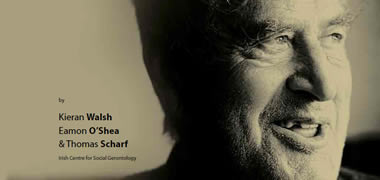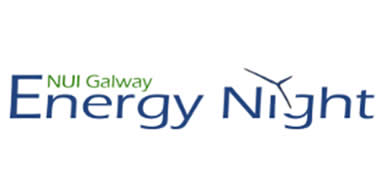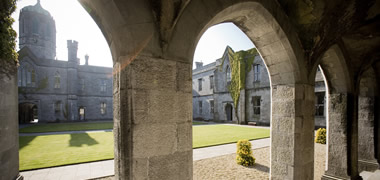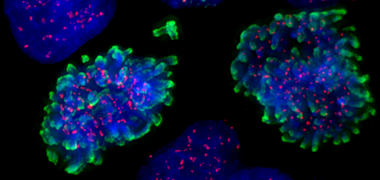-
Courses

Courses
Choosing a course is one of the most important decisions you'll ever make! View our courses and see what our students and lecturers have to say about the courses you are interested in at the links below.
-
University Life

University Life
Each year more than 4,000 choose University of Galway as their University of choice. Find out what life at University of Galway is all about here.
-
About University of Galway

About University of Galway
Since 1845, University of Galway has been sharing the highest quality teaching and research with Ireland and the world. Find out what makes our University so special – from our distinguished history to the latest news and campus developments.
-
Colleges & Schools

Colleges & Schools
University of Galway has earned international recognition as a research-led university with a commitment to top quality teaching across a range of key areas of expertise.
-
Research & Innovation

Research & Innovation
University of Galway’s vibrant research community take on some of the most pressing challenges of our times.
-
Business & Industry

Guiding Breakthrough Research at University of Galway
We explore and facilitate commercial opportunities for the research community at University of Galway, as well as facilitating industry partnership.
-
Alumni & Friends

Alumni & Friends
There are 128,000 University of Galway alumni worldwide. Stay connected to your alumni community! Join our social networks and update your details online.
-
Community Engagement

Community Engagement
At University of Galway, we believe that the best learning takes place when you apply what you learn in a real world context. That's why many of our courses include work placements or community projects.
2012
All 2012
Risks of Social Exclusion for Rural Older People Explored in New Report

Monday, 20 February 2012
A new report from NUI Galway finds that while growing old in rural areas can be a positive experience, there are also a number of factors which may lead to older people experiencing social exclusion. The report, ‘Social Exclusion and Ageing in Diverse Rural Communities’, from NUI Galway’s Irish Centre for Social Gerontology is the first of its kind on the island of Ireland. It takes an in-depth look at exclusion for older people living in rural settings across Ireland and Northern Ireland. The report identifies five areas where older people living in rural areas can be excluded. These domains of exclusion are: (1) social connections and social resources; (2) services; (3) transport and mobility; (4) safety, security and crime; and (5) income and financial resources.The report, which was launched today (20 February) at NUI Galway by Ireland’s Minister of State for Disability, Equality, Mental Health and Older People, Kathleen Lynch TD, and Northern Ireland’s Minister for Agriculture and Rural Development, Michelle O’Neill MLA.“Our findings suggest that an older person’s experience of exclusion across these domains is influenced by such factors as individual disposition, life transitions, place characteristics, and macro-economic forces. It is this influence that determines the depth and extent of exclusion experienced. We came across many older people living in what would appear to be difficult circumstances, but a sense of belonging and keeping connected in their communities helped to maintain their quality of life,” explained one of the authors of the report, Professor Eamon O’Shea, of NUI Galway’s Irish Centre for Social Gerontology (ICSG). Older people in the study were generally happy with their lives and with where they lived and were optimistic about the future. However, it was clear to the authors how service depletion, weak social connections and older people’s low expectations can be significant issues.In response to the research, Minister Lynch TD said: “This most informative study on social exclusion and ageing in diverse rural communities in Ireland will be of great importance to planners and policy makers, service providers and community workers – North and South – in planning and implementing intervention strategies that target loneliness and social isolation in rural areas. This research is a welcome contribution to European Year for Active Ageing and Solidarity between Generations, and provides valuable insights into the lived experiences of older people. It tells us of the great diversity within the older population as a whole in Ireland and the very valuable contribution of older people to society. The research reminds us that good communities, good neighbours and attachment to place make life better – irrespective of personal circumstances.” Minister O’Neill MLA welcomed the publication of the cross-border document stating: “As Minister for Agriculture and Rural Development, and as a rural dweller, I am acutely aware of the difficulties facing many people living in our rural communities and particularly the elderly. This all-island research report on Social Exclusion and Ageing in Rural Communities highlights those many difficulties so that informed action can be taken. I congratulate the Irish Centre for Social Gerontology and the Healthy Ageing in Rural Communities (HARC) Research Network for this work.”Minister O’Neill went on to say: “Later this week I will be formally launching the ‘Tackling Rural Poverty and Social Isolation’ framework which provides a package of some £16 million over the next four years to help the most vulnerable rural dwellers facing poverty and social isolation.”The research calls for more innovative ways to support local areas to assist and engage older people in rural society and presents recommendations in order to assist in this task and to reduce the potential for older people to be excluded in rural communities. Speaking at the event, Dr Kieran Walsh of the ISCG said social exclusion is a complex phenomenon: “With this work we are closer to understanding how it can affect older people’s lives in rural communities. For instance, a person who experiences a transition into ill health, and who has recently moved to a remote community, may find it more difficult to establish social connections. Alternatively, an individual with ill health who has developed a capacity for coping and who lives in a place with a strong sense of community may have less difficulty in maintaining social connections. Or, indeed, a person may be socially included, but be excluded in terms of service access.”Professor Scharf, Director of the ICSG, added: “With the ageing of our rural communities, and the increasingly difficult economic climate, we must be aware of how the diversity of people and places can intersect to produce both inclusion and exclusion.”Dr Roger O’Sullivan, Director of the Centre for Ageing Research and Development in Ireland (CARDI) - funder of the research, commented: “People who live in rural areas and experience exclusion are often invisible to society and this is particularly true for older people. With the launch of this report today those developing policy and services now have substantial evidence at hand to help make rural Ireland a good place to grow old.”The report authors were Dr Kieran Walsh, Professor Eamon O’Shea and Professor Tom Scharf, from the Irish Centre for Social Gerontology at NUI Galway. The research was completed in collaboration with the Healthy Ageing in Rural Communities (HARC) research network (www.harcresearch.com), which is a cross-border interdisciplinary initiative involving NUI Galway, Queen’s University Belfast, Rural Community Network and FORUM Connemara.-ends-
>> Read full story about Risks of Social Exclusion for Rural Older People Explored in New Report
GPS Technology in Improving Sport Focus of NUI Galway Sports Talk

Tuesday, 21 February 2012
The next talk in the NUI Galway public talk series on Sports Technology will take place on Tuesday, 28 February at 6pm. Entitled Application of GPS Technology in Improving Running Performance, the talk will be delivered by former Irish Olympian Gary Ryan, Elite Sports Development Officer at NUI Galway.This talk will examine the use of GPS in sport and focus on the key questions that GPS technology can answer for a coach, its use as a performance analysis tool and and how it can directly help improve an athlete’s performance in a wide range of sports, and at a varying levels of ability.According to Gary Ryan, Elite Sports Development Officer at NUI Galway, “The development of GPS technologies for use in sport is one of the most exciting developments in modern coaching in recent years. Coaching is all about the giving of accurate information and feedback. The potential of GPS to revolutionise coaching, tactics and training in a wide variety of sports is very exciting and challenging for both engineers and coaches.”Gary’s early sporting career focused on soccer when he played for Limerick City and Waterford United as a teenager before switching successfully to Athletics in his early twenties. Gary went on to become the first Irish Athlete in 60 years to qualify for a sprint event at an Olympic Games when he qualified for the 1996 Atlanta event in the 200m. He also competed in the Sydney games of 2000. The highlight of his career was winning a bronze medal in the 2004 World Indoor Championships in the 4x400m relay in Budapest. He also was the first Irish sprinter to reach a global final at the World Student games in 1997 where he finished 4thin the 200m.During his competitive career Gary was also a Lecturer on both the Physical Education and Sports Science Courses at UL. A multiple Irish record holder and national champion, Gary also captained the Irish team for a number of years and retired from competitive athletics after the 2006 European Championships in Gothenburg. After his retirement as a competitive athlete, he took up the role of Director of Coaching for Athletics Ireland and was head coach for the World Junior championships in 2009 in Poland.Gary has coached a number of top track athletes and Olympic hopefuls such as Fiona O’ Friel from Dublin and Emily Maher from Kilkenny, and has worked with a broad range of sports people and teams including the Clare Hurling team in 2006 and Lar Corbett, Hurler of the Year in 2010.The free public talk will take place in room ENG-3035 in the Engineering Building at NUI Galway.The series of Sports Technology talks is being organised as part of NUI Galway’s degree programme in Sports & Exercise Engineering, whose students are being educated to design the next generation of sports and exercise systems and devices.For more information on the Sports Technology talks, which are supported by Engineers Ireland (West), and the Institute of Electrical and Electronic Engineers, visit www.ExerciseEngineering.com or call 091 492728.-ENDS-
>> Read full story about GPS Technology in Improving Sport Focus of NUI Galway Sports Talk
Top Experts Come Together at NUI Galway to Discuss Best Way of Putting Energy to Work for Ireland

Tuesday, 21 February 2012
As part of NUI Galway Energy Night experts from the fields of business, enterprise and investment, innovation and energy technology will come together to debate ‘Putting Energy to Work for Ireland’ on Tuesday, 6 March. The Energy Night will run from 2pm in the Bailey Allen Hall, NUI Galway, with the panel discussion commencing at 6pm.NUI Galway’s Energy Night is the only event of its kind in Ireland, and it reflects the central role the student organisers believe energy must play in the economic recovery of Ireland. Organised by the NUI Galway’s Chemistry, Energy and Physics Societies, Energy Night will also feature an Industry and Career Fair featuring some of the most prominent energy employers including Eirgrid, Cylon, Enerit, Nutherm, Shell, AER Sustainable Energy, United Technologies Research Centre Ireland, HDS Energy and Kingspan Renewables.The week prior to NUI Galway Energy Night, 27 February to 4 March, organisers will be running targeted CV and professional development workshops for students interested in careers in the energy sector. These will be organised in conjunction with the Career Development Centre at NUI Galway. The Industry and Career Fair will run concurrently with a Poster Showcase of cutting-edge and multi-disciplinary energy research that is currently being undertaken in Irish universities. With presenters working in areas such as biofuels, wave energy, smart buildings, smart grids and data efficiency, the Career and Industry Fair and Research Showcase will provide an invaluable opportunity for students, academics and business people from around the country to network, exchange thoughts and ideas and set up new and exciting collaborations.The centrepiece of Energy Night will take place at 6pm with the Panel Discussion, ‘Putting Energy to Work for Ireland’. RTÉ’s The Business presenter, George Lee, will moderate the discussion that features energy executives and experts from Ireland and abroad including: Gabriel D’Arcy, CEO, Bord na Móna; Norman Crowley, founder of Crowley Carbon; Brian O’Cathain, CEO of Petroceltic; Serial Entrepreneur George Polk, who has worked with Richard Branson and George Soros; and Tom Kelly, Clean Tech Divisional Manager with Enterprise Ireland.“The NUI Galway Energy Night is an entirely student run event with the aim of enhancing understanding, interaction and collaboration between energy stakeholders in the policy, business, technological and academic spheres as well as the public. It is a hugely exciting event as it brings local community, students, researchers, lecturers, industry representatives and experts in the energy field together to discuss where we are at, what needs to be done and what can be done”, said Rory Monaghan, Lecturer in Energy Systems Engineering at NUI Galway.The NUI Galway Energy Night is made possible by the generosity of sponsors, including Galway-based Enerit Ltd and Shell. The Energy Night has been awarded EXPLORE funding from NUI Galway, which is funding for projects that build a culture of innovation on campus. NUI Galway Energy Night is also an Engineers Ireland Continuing professional development (CPD) approved event.This event is open to members of the public. For more information visit the events website www.nuigenergynight.com, or contact Sinéad Burke at director@nuigenergynight.com.-ENDS-
>> Read full story about Top Experts Come Together at NUI Galway to Discuss Best Way of Putting Energy to Work for Ireland
Compact Imaging Reaches Agreement on Research Collaboration with Irish Universities

Thursday, 16 February 2012
National University of Ireland Galway, University of Limerick to Provide Biophotonics Expertise, Gain Stake in Emerging Silicon Valley Technology CompanyCompact Imaging (CI) today announced an innovative research collaboration with National University of Ireland Galway and University of Limerick.The two-year agreement, in the scientific field of biophotonics, specifically optical coherence tomography (OCT), will explore and further develop CI’s novel technologies. OCT is an imaging technique similar to ultrasound, but employing light rather than sound.The project will combine National University of Ireland Galway’s globally-recognised body of OCT research in medical and biological imaging with CI’s development and intellectual property in the area of multiple-reference OCT. The focus will be on Compact Imaging’s MRO™, multiple-reference OCT, architecture.CI is an early stage technology company focused on the rapidly expanding market for non-invasive optical imaging, measurement and analysis. The Company’s MRO™ technology makes possible very small (cell phone size), low-cost, robust OCT-based devices for these applications. CI, based in Silicon Valley, holds a portfolio of US patents covering multiple-reference optical coherence tomography (MRO™).The collaboration makes the extensive scientific research capabilities of National University of Ireland Galway (NUI Galway) and University of Limerick (UL) available to CI. The agreement has been led by and supported by Galway University Foundation and University of Limerick Foundation. The agreement will lead to the University foundations receiving equity in CI. Additional financial details are confidential, for commercial reasons.NUI Galway’s Professor Martin Leahy will direct the research efforts. Professor Leahy is Chair of Applied Physics at NUI Galway, Scientific Director of the National Biophotonics Imaging Platform Ireland (NBIPI) www.nbipireland.ie and Director of the University’s Tissue Optics and Microcirculation Imaging Laboratory (TOMI) http://tomi.nuigalway.ie.“Physics has delivered extraordinary advances in almost every facet of modern life,” said Professor Leahy. “From the humble thermometer and stethoscope to X-Ray, CT, MRI, ultrasound, PET and radiotherapy, our health has been transformed by these advances. Photonics promises to bring healthcare to the next level, as it is the only means to see cells and molecules in small, accessible, low cost and safe imaging systems.“Compact Imaging’s multiple-reference OCT technology has the potential to harness all these advantages, delivering solutions to health and security markets with a distinct edge,” added Professor Leahy. “Our proprietary MRO™ technology has a broad set of biological imaging and measurement applications in fields from medical to security,” said Don Bogue, CEO of CI. “By embarking on this collaboration with Professor Leahy and the laboratories at National University of Ireland Galway, Compact Imaging gains access to outstanding research capability with a group that has the right scientific expertise and research focus to move MRO™ well beyond where our startup-level resources would otherwise allow. We expect that this collaboration will accelerate our development and delivery of small low-cost solutions to a variety of markets,” he said.The underlying imaging technology, optical coherence tomography (OCT), was first commercialised more than a decade ago for use in ophthalmic and medical diagnostic imaging. CI’s MRO™ is a very different architecture from that used in conventional OCT systems. The architecture enables design of small form factor (cell phone size), low cost devices ideally-suited both to integration with large multi-purpose instruments for office or clinic use and to higher volume mobile or remote applications.“Leveraging knowledge to support innovation is an important part of the mission of universities. For NUI Galway and UL to partner in this way with an emerging company in Silicon Valley is a very exciting development. NUI Galway is delighted to be part of this collaboration which brings mutual benefit to all partners – academic and commercial,” said Dr Jim Browne, President of NUI Galway.Speaking about the alliance, UL President, Professor Don Barry said: “This alliance and this pioneering commercial agreement highlight what can be achieved with some innovative thinking from supporters of the University. It demonstrates ways in which commercially astute universities and their foundations can benefit through creative collaborations with industry.”-ends-
>> Read full story about Compact Imaging Reaches Agreement on Research Collaboration with Irish Universities
New Discovery in Fight against Huntington’s Disease

Wednesday, 22 February 2012
Researchers at National University of Ireland Galway have made a significant scientific discovery in the fight against Huntington’s disease. The novel findings are published today (21 February) in the online, open access journal PLoS Biology. Huntington’s disease is an incurable, inherited, neurodegenerative disorder that causes uncontrolled movements, emotional disturbances, and severe mental deterioration. It affects over 100,000 people worldwide, with another 300,000 likely to develop symptoms in their lifetime. There is currently no way to halt progression of the disease, and available treatments are designed only to manage the symptoms.The new research identifies specific enzymes called HDACs, or histone deacetylase complexes, as positive agents for the mutation that underlies Huntington’s disease. When HDACs are active, they exacerbate the disease-causing mutation in cells, possibly contributing to the severity of the disorder. The new research found that blocking these HDACs with experimental drugs greatly reduced the risk of further mutation.“Ongoing mutations in the brain of Huntington’s patients are thought to drive progression of the disease,” said Professor Robert Lahue of National University of Ireland Galway’s Centre for Chromosome Biology, and lead author on the new research paper. “Our discovery suggests that inhibiting HDAC function slows down the mutation process, and thereby could slow disease progression. A key finding of the research was to pinpoint specific HDACs for selective inhibition.”Several laboratories in the United States of America are currently testing new HDAC inhibitors in laboratory models for efficacy and safety in related fields. Professor Lahue and his research group hope to work with these labs to evaluate the effect of HDAC inhibitors on the mutational process. “Huntington’s is a particularly cruel disease, as it is passed from parent to child, often with increased severity or earlier onset,” Professor Lahue adds. “With modern genetic testing, people can now establish whether they received the mutant gene from their parent, but then they live a waiting game for the onset of symptoms, which usually appear around the age of 40.”Professor Lahue emphasised that the HDAC inhibitors are still experimental, and that their development to potential drugs is still some way off. “It is very exciting that basic research at National University of Ireland Galway, funded by Science Foundation Ireland, has created a new possibility for helping Huntington’s patients and their families.”The findings may also have implications for research into certain other neurological disorders, such as myotonic dystrophy type I, a type of muscular dystrophy caused by the same sort of mutation as seen in Huntington’s.-ends-
>> Read full story about New Discovery in Fight against Huntington’s Disease















